Next we will visit 3 important ashrams. Viratha Kunda, Sarabanga Ashrama, Sudeekshanashrama and finally Agasthya Ashrama. From Chitrakoota, let us all take leave. Before taking leave, let us circumambulate Kamadgiri once and then take a leave. Sri U. Ve. Velukkudi Krishnan Swami gave us quick recap on all the places of Chitrakoot.
On the other hand, Mother Sita represents the divine grace principle. When a jeeva is in presence of this grace, there are various forces within that jeeva that want to separate the two. So the forest and wilderness analogy is very pertinent.
Let us briefly look at encounter of Lord Rama and mother Sita with the Rakshasa Viradha; he is son of Jaya and Satahrada. The word Viradha means opposition. Lord Brahma bestows the Rakshasa a boon that he can't be killed by any weapon because he was invincible to every weapon in heaven and earth. Viradha abducts mother Sita. Lord attacks him. Fierce battle ensues. Viradha drops mother and attacks Lord Ram. Viradha grabs Lord Rama and his brother Lakshmana and carries them. Mother Sita runs after them wailing.
The Rakshasa can't be killed. Lord Rama cuts a hand of the attacker and Lakshmana cuts the other hand. Lord Lakshmana digs a pit and leaves the Rakshasa there. The Rakshasa emits huge sounds. In the end Rakshasa realizes his wrong ways and praises Lord Rama. When the monsters arms are broken, he begins to praise the brothers for liberating him: he had, in a previous life, been a celestial being named Tumburu, and had been cursed by Kuvera to live as a fearsome monster until he be killed by Rama. The brothers bury him, and he apparently goes back to his former celestial abode.
We wanted to worship this place - Viradha Kund. Upon asking the guide, he said, it is such a dense forest where you have to walk 5 miles and it is also so difficult to do that, having so many wild animals that it is not advisable to go there... So Swami and his people skipped Viradha Kund. They recited prayers to Viradha on the entrance way to his place.
After burying the monster in a spacious ditch, Rama with his brother and wife arrived at Sharbhanga's Ashram.
The Sharbhanga Ashram is one of the first ashrams we find at the periphery of the Dandakaranya forest. It is also the first major ashram that Lord Rama visited. It is said that when Rama with Sita and Lakshmana neared the ashram of Sage Sarabhanga, they saw Indra’s and other devas chariots waiting outside. They waited outside for the guests to leave. Soon, when they entered in the sage's presence, Sage Sharbhanga told Rama that Indra had come personally to take him to Brahmaloka but he chose to wait since he wanted to meet all of them. Now that he had seen them, he was ready to leave. When Rama asked him for guidance to stay in the Dandakaranya forest, Sage Sharbhanga was unable to offer his hospitality any further. Hence he gave directions to Rama to reach Sage Sudeekshana's Ashram. He even mentioned the kind of foliage that would guide them; that the trees would get taller as he approached the ashram and gave very precise directions to get there. Some of these can be found even now! Keeping Rama in front of him, Sage Sarabhanga then entered fire to reach Brahmalok.
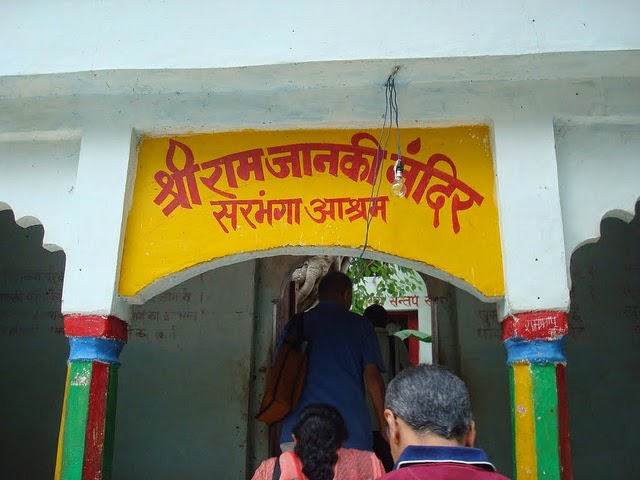

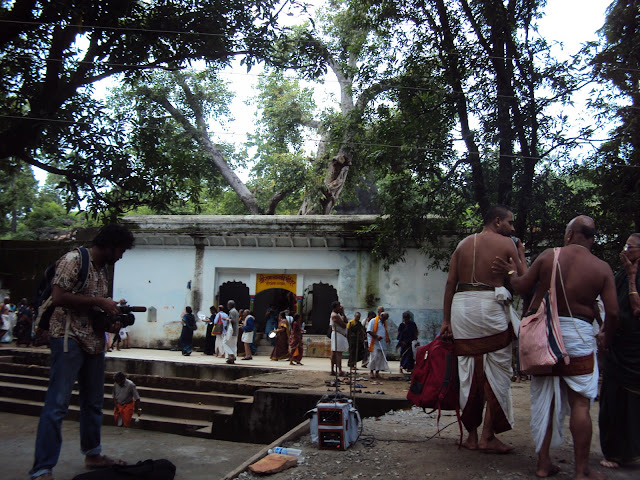
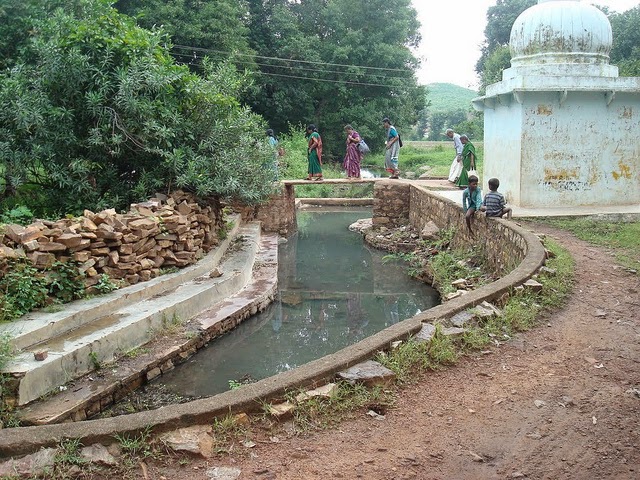

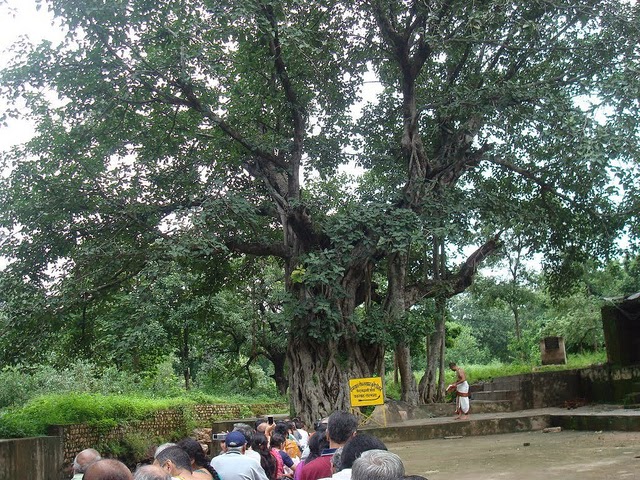
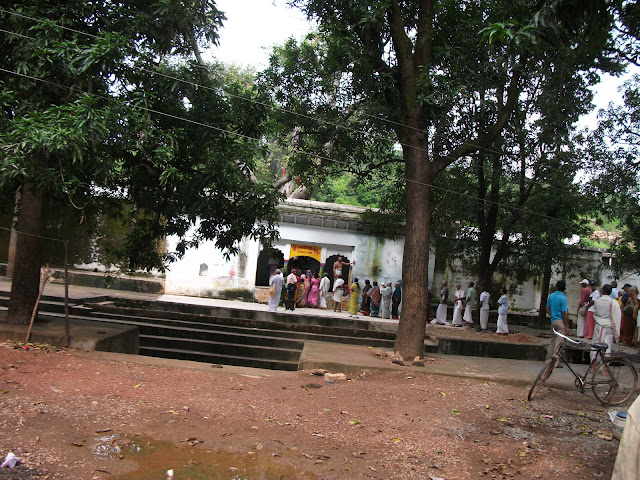
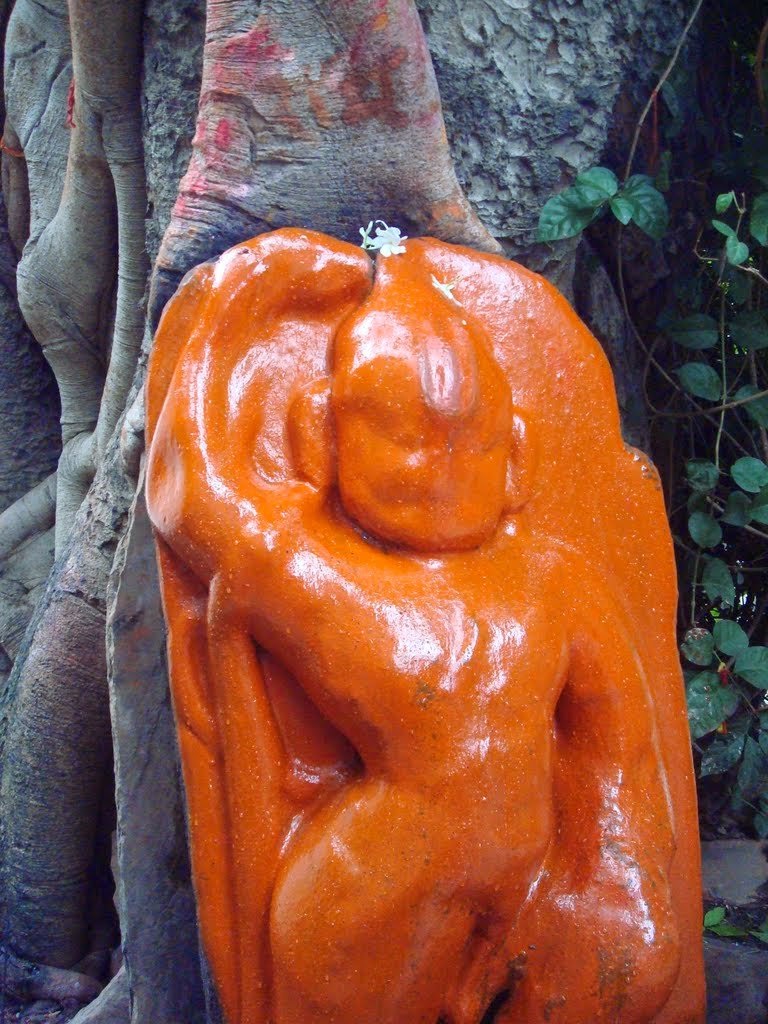
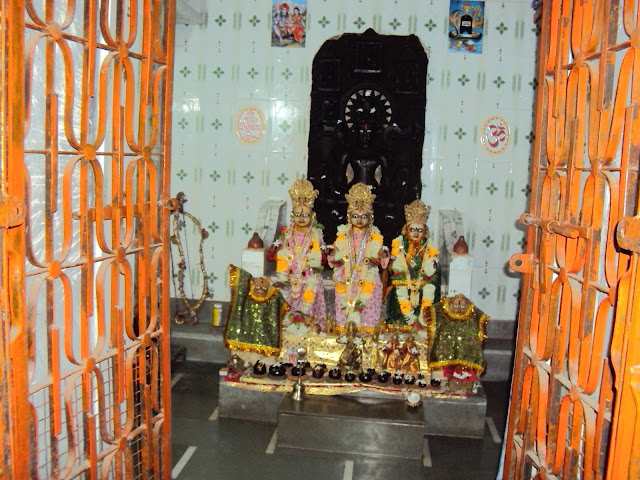

The current location of this Ashram is around 13 kilometers from Chithara Station, Satna, Madhya Pradesh. As we all entered the ashram, it was very calm. The first thing that caught our eyes was a small rivulet running alongside the ashram know as river Sharbhanga. We cross over the rivulet into the ashram to come into a large courtyard with the temple on the left and the small hermitage of the sages living here even now. The temple has a sannidhi for Sharbhanga, There is also a separate Rama Janaki Mandir which is dark and the idols seem very old.
- Kamadgiri Parvat:
- Kamadgiri is the main holy place of Chitrakoot Dham. The Sanskrit word 'Kamadgiri' means the mountain which fulfils all the wishes and desires.
- Bharat Milap:
- Bharat Milap is a place about half way on the Parikrama Path of Kamadgiri in Chitrakoot where Bharat is said to have met Rama during his exile period.
- River Mandakini:
- River Mandakini is a holy river at Chitrakoot area. On each Amavasya lot of people visit to Chitrakoot and take holy bath and sip of this holy river and also offer various mass bathing goods to the river.
- Ram Ghat:
- The ghats that line the Mandakini river are called Ramghat. Here, amidst the chanting hymns and the sweet fragrance of incense, holy men in saffron sit in silent meditation or offer the solace of their wisdom to the countless pilgrims who converge here. The evening arti here witnesses a deep and abiding faith in the sanctity of Chitrakoot. During the exile period Ram, Lakshman and Sita took bath here and believed to have appeared before the poet Tulsidas.
- Sphatik Shila:
- It is a landmark destination in the holy pilgrim centre of Chitrakoot called Sphatik Shila. As the literal meaning of this sanskrit word suggests, Sphatik a reddish crystal like rock where Lord Ram and his beloved wife used to sit and admire the scenic ambiance of the surroundings.
- Hanuman Dhara:
- Hanuman Dhara is a hill in Chitrakoot where is a idol of lord Hanuman. The stream of water continuously falls on his shoulder and the water goes to a small pit downwards. There is a story that after burning Ravana's Lanka Hanuman felt unbearable burning sensation all over his body. He went many places to get rid of it but all scale negociate about 300 steps, on the top of the hills.
- Sita Rasoi:
- Sita Rasoi Sita Rasoi is situated about 100 feet from the Hanuman Dhara. According to Hindu Mythology Sita Rasoi was the kitchen of Sita.
- Gupt Godavari:
- Gupt Godavari is a cavern located at a distance of 18 km south of Ram Ghat in Chitrakoot Dham. As per the legend, the Godavari River emerging as a perennial stream from the rocks deep inside this cave, flows down to another cave below and then disappears in the mountain.
On the other hand, Mother Sita represents the divine grace principle. When a jeeva is in presence of this grace, there are various forces within that jeeva that want to separate the two. So the forest and wilderness analogy is very pertinent.
Let us briefly look at encounter of Lord Rama and mother Sita with the Rakshasa Viradha; he is son of Jaya and Satahrada. The word Viradha means opposition. Lord Brahma bestows the Rakshasa a boon that he can't be killed by any weapon because he was invincible to every weapon in heaven and earth. Viradha abducts mother Sita. Lord attacks him. Fierce battle ensues. Viradha drops mother and attacks Lord Ram. Viradha grabs Lord Rama and his brother Lakshmana and carries them. Mother Sita runs after them wailing.
The Rakshasa can't be killed. Lord Rama cuts a hand of the attacker and Lakshmana cuts the other hand. Lord Lakshmana digs a pit and leaves the Rakshasa there. The Rakshasa emits huge sounds. In the end Rakshasa realizes his wrong ways and praises Lord Rama. When the monsters arms are broken, he begins to praise the brothers for liberating him: he had, in a previous life, been a celestial being named Tumburu, and had been cursed by Kuvera to live as a fearsome monster until he be killed by Rama. The brothers bury him, and he apparently goes back to his former celestial abode.
We wanted to worship this place - Viradha Kund. Upon asking the guide, he said, it is such a dense forest where you have to walk 5 miles and it is also so difficult to do that, having so many wild animals that it is not advisable to go there... So Swami and his people skipped Viradha Kund. They recited prayers to Viradha on the entrance way to his place.
After burying the monster in a spacious ditch, Rama with his brother and wife arrived at Sharbhanga's Ashram.
Sharbhanga Ashram:
As we enter this large forest area, the beauty of the surroundings and the pristine flora steal in a strange peace into our hearts. One can just imagine how much more beautiful this area must have been in Lord Rama's period.The Sharbhanga Ashram is one of the first ashrams we find at the periphery of the Dandakaranya forest. It is also the first major ashram that Lord Rama visited. It is said that when Rama with Sita and Lakshmana neared the ashram of Sage Sarabhanga, they saw Indra’s and other devas chariots waiting outside. They waited outside for the guests to leave. Soon, when they entered in the sage's presence, Sage Sharbhanga told Rama that Indra had come personally to take him to Brahmaloka but he chose to wait since he wanted to meet all of them. Now that he had seen them, he was ready to leave. When Rama asked him for guidance to stay in the Dandakaranya forest, Sage Sharbhanga was unable to offer his hospitality any further. Hence he gave directions to Rama to reach Sage Sudeekshana's Ashram. He even mentioned the kind of foliage that would guide them; that the trees would get taller as he approached the ashram and gave very precise directions to get there. Some of these can be found even now! Keeping Rama in front of him, Sage Sarabhanga then entered fire to reach Brahmalok.






The current location of this Ashram is around 13 kilometers from Chithara Station, Satna, Madhya Pradesh. As we all entered the ashram, it was very calm. The first thing that caught our eyes was a small rivulet running alongside the ashram know as river Sharbhanga. We cross over the rivulet into the ashram to come into a large courtyard with the temple on the left and the small hermitage of the sages living here even now. The temple has a sannidhi for Sharbhanga, There is also a separate Rama Janaki Mandir which is dark and the idols seem very old.


0 comments:
Post a Comment